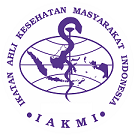Promoting Menstrual Health Through Nutritional Education and Peer-Based Interventions in Adolescent Girls: A Scoping Review
DOI:
https://doi.org/10.26911/thejhpb.2025.10.03.01Abstract
Background: Menstruation, a normal part of puberty, is frequently misinterpreted because of societal stigma and limited access to proper education. Educational settings and peer-based programs are key in enhancing both menstrual and nutritional health, which are vital to supporting the overall well-being of adolescent girls. This Study aims to explore the factors influencing the promotion of menstrual health through nutrition education and peer-based interventions for adolescent girls using a scoping review methodology.
Subject and Method: This scoping review was conducted using data obtained from PubMed Central, Science Direct and Google Scholar. The target population includes adolescent girl related to their menstrual health, nutritional education and peer-based intervention. A search was conducted using the keywords “Menstrual health" AND "nutritional education" AND "peer-based interventions" AND ("adolescent girls" OR "teen girls" OR "adolescent health") AND ("menstruation" OR "menstrual hygiene" OR "menstrual health promotion") AND ("nutrition" OR "diet" OR "healthy eating") AND ("peer support" OR "peer education" OR "peer-led programs"), yielding 4.245 articles, which were then filtered down to 7 relevant articles after applying a 10-year time frame.
Results: Several factors influence the promotion of menstrual health through nutrition education and peer-based interventions for adolescent girls. These include social support from peers, skills-based education, family involvement (especially mothers), sufficient nutrition literacy, psychosocial factors such as self-confidence and self-control, the role of schools as a health education platform, and the theoretical models used in the program, such as the Theory of Planned Behavior.
Conclusion: Peer-led and skills-based education improves health outcomes for adolescent girls. Combining peer support, family involvement, and active learning enhances program success. Schools and communities should adopt these models to address adolescent health issues effectively.
Keywords:
Menstrual Health , Nutritional Education, Peer-Based InterventionsHow to Cite
References
Abu-Baker NN, Eyadat AM, Khamaiseh AM. (2021). The impact of nutrition education on knowledge, attitude, and practice regarding iron deficiency ane mia among female adolescent students in Jordan. Heliyon. 7(2): e06348. doi: 10.101 6/j.heliyon.20-21.e06348.
Ariyanty LD, Setiyani A, Sumasto H. (2024). The relationship between nutritional status and the incidence of dysme norrhea in adolescent girls: A frequ ency analysis based on nutri-tional status categories. Health Dyn. 1(1): 324-329.
Babapour F, Arzani A, Shahraki E, Moham-madi E. (2023). The effect of peer education compared to education provided by healthcare providers on premenstrual syndrome in high school students: A social network-based quasi-experimental controlled trial. Neuropsychopharmacol Rep. 43(1). doi: 10.1002/npr2.1 2305.
Damghanian A, Ghasemi V, Mohammadi Y. (2019). Effect of peer education on physical activity and nutrition among Iranian adolescents. Soc Health Be-hav. doi: 10.4103/SHB.SHB.
Darabi F, Yaseri M. (2022). Intervention to improve menstrual health among adolescent girls based on the theory of planned behavior in Iran: A cluster-randomized controlled trial. J Prev Med Public Health. 55(6): 595-603. doi: 10.3961/jpmph.22.365.
Dodd S, Craig P, Bowers H, et al. (2022). School-based peer education inter-ventions to improve health: A global systematic review of effectiveness. BMC Public Health. 22(1): 1-13. doi: 10.1186/s12889-022-14688-3.
Eghbal SB, Mohammadbeigi A, Shafiei M. (2023). The effectiveness of educa-tional program based on health belief model on promotion of puberty he alth concepts among teen girls: A cross-sectional study in north of Iran. BMC Womens Health. 23(1): 1-9. doi: 10.1186/s12905-023-02391-3.
Eslamimehr F, Shahraki Sanavi F, Shafei M. (2017). The examination of the effecti veness of an educational inter-vention based on the planned beha-vior theory on improving pubertal health behavior in female high school students. Int J Pediatr. 5(9). doi: 10-.22038/ijp .2017. 2402 7.2028.
Ghasemi V, Damghanian A, Hajiabdolbaghi M. (2019). The effect of peer edu-cation on health promotion of Ira nian adolescents: A systematic revi ew. Int J Pediatr. 7(3): 9139-9157. doi: 10.220 38/ijp.2018.36143.3153.
Jarrahi R, Shahhosseini Z, Shariatpanahi S. (2021). The effect of menstrual he alth education adopting the peer education method with the parti-cipation of mothers on adolescents’ menstrual health behaviors: A clini cal trial. J Midwifery Reprod Health. 9(1). doi: 10.22038/jmr h.2020.424 82.1489.
Mohamadi S, Moradi M, Mahdizadeh M. (2019). Comparison of the effect of motivational interview and peer group education on knowledge and perform ance about puberty and mental health in adolescent girls. J Nurs Midwifery Sci. 6(3): 149-155. doi: 10.4103/JN MS.JNMS.
Nafisah L, Rizqi YNK, Aryani AA. (2023). Increasing reproductive health lite-racy among adolescent females in Islamic boarding schools through pe-er educa tion. Abdimas. 8(1): 38-51. doi: 10.26 905/abdimas.v1i1.8060.
Nooh AM (2015). Menstrual disorders among Zagazig University students, Zagazig, Egypt. Middle East Fertil Soc J. 20(3). doi: 10.101 6/j.mef s.201 4.0-8.002.
Pulingmuding M, Ratnawati A, Yuliarti S. (2019). Determinants of anemia in adolescent girls: Literature review. Indones J Glob Health Res. 2(4). doi: 10.37287/ijghr.v2i4.2 50.
Rezvani K, Jahanfar S, Zare Z (2024). Investigating the effect of peer-led educational intervention on behavi ors related to pubertal health and its determinants in high school girls of Genaveh, Iran: Application of social cognitive theory. Arch Pediatr. 31(8): 533-539. doi: 10.1016/j.arcped.202-4.05.001.
Shah V, Mandali J, Cham B, et al. (2022). Puberty health intervention to im-prove menstrual health and school attendance among adolescent girls in The Gambia: Study methodology of a cluster-randomised controlled trial in rural Gambia (MEGAMBO TRI AL). Emerg Themes Epidemiol. 19(1): 1-15. doi: 10.1186/s12982-022-00114-x.
Thakur J, Goswami M, Roy S (2020). Understanding menstrual charac-teris tics from the perspective of repro duc tive energetics: A study on the adoles cent Oraon tribal popula-tions. Anthro pol Rev. 83(2): 109-128. doi: 10.2478 /anre-2020-0009.
Wati E, Sistiarani C, Rahardjo S. (2023). Diet behavior and consumption of iron inhibitors: Incidence anemia in adolescent girls. J Public Health Afr. 14(12): 6. doi: 10.4081/jphia.20 23.-2593.
Yogesh M, Gupta R, Sharma R (2024). Comparing skills-based and lecture-based education on female adoles-cents’ knowledge, attitudes, and prac-tices regarding menstrual health in puberty: A quasi-experimental study. J Educ Health Promot. 1-6. doi: 10.41-03/jehp.jehp_1875_23.
Zuraida R, Permana H, Jannah R. (2023). The effect of anemia free-club model (CBA) application and giving of blood supplementary tablets (TTD) on knowledge, attitudes, and he moglobin levels in anemic teenage girls of senior high school. Jurnal Aisyah Ilmu Kesehat. 8(1): 595-604. doi: 10.306 04/jika.v8i1.1731.



